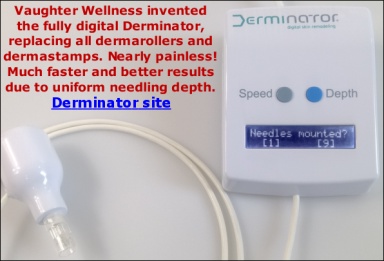I was referring to
Capillarity (having nothing to do with capillary veins or inflammation).
When you pierce the skin and make a micro-hole, you have created a thin, narrow, long tube.
Because when we say that the hole "closes", we don't mean that it closes in the
horizontal plane. It closes in the
vertical plane. That the skin "closes" means not that some kind of crust forms on top, but that the sides of the micro-channel move towards eachother, so that there is no 0.25 mm wide "air hole" in the skin. That happens immediately after rollign due to water cohesion and the surrounding tissue pressure.
A "closed" microchannel resulting from rolling with a 1 mm dermaroller can be regarded as a capillary tube with a depth of around 0.7 mm and a width of extremely much less than the original 0.25 mm needle diameter that was used to create that hole. From microneedled skin micrographs (microscopy photo's) we can see that those "closed" microchannels are but a few skin cell diameters wide, at most. And they are not filled with air, but due to capillary action (adhesion) filled with tissue fluids.
Of course those tissue fluids, because they have direct access to the skin surface (they reside in a pierced hole) evaporate continuously, and lateral friction in the moving skin also causes those fluids to be partially expelled from the "hole", aiding their evaporation.
Replensihment of those fluids happens with more tissue fluids, but also with externally applied skin products, due to capillary effects and lateral friction causing a suction effect (on a molecular level, whereby adhesion and cohesion forces play major roles).



